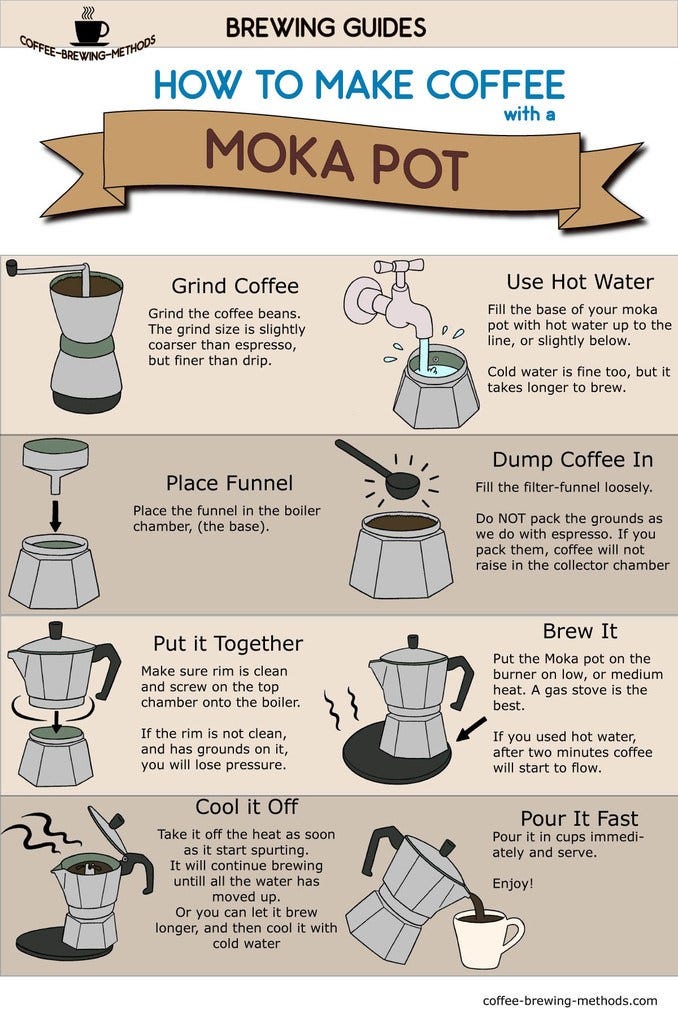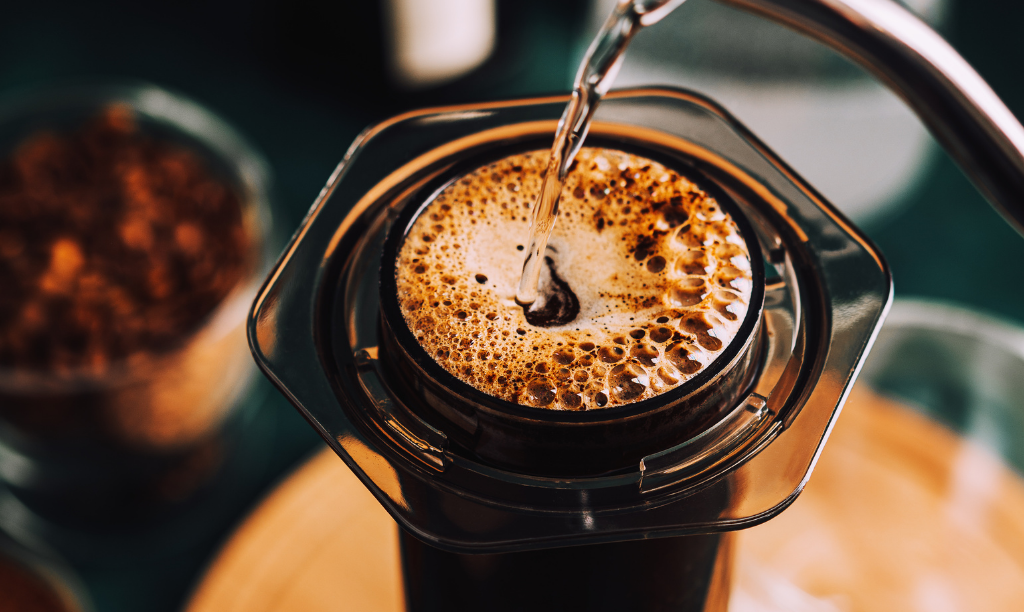The Science Behind Coffee Developing: Just How Temperature and Time Affect Your Drink
Recognizing the scientific research behind coffee brewing discloses that temperature level and time are not simple variables but crucial aspects that dictate the drink's taste profile and overall top quality. As we discover the subtleties of these aspects, the concern occurs: just how can one efficiently balance temperature and time to accomplish that perfect mixture?
The Chemistry of Coffee Extraction
The chemistry of coffee removal delves into the intricate procedures that transform raw coffee beans into the fragrant drink enjoyed worldwide. This improvement primarily includes the solubility of different substances present in the beans, which are influenced by aspects such as grind dimension, water quality, and the developing technique utilized.
Throughout the brewing process, hot water serves as a solvent, removing soluble substances, including high levels of caffeine, sugars, lipids, and acids, from the coffee grounds. Each compound contributes to the taste profile, aroma, and body of the last drink. Acids are liable for tangy and bright notes, while oils add to a rich mouthfeel.
The initial stages of brewing essence acids and sugars, leading to a positive level of acidity, while prolonged removal can lead to resentment due to over-extraction of unfavorable compounds. Understanding these chemical communications is crucial for enhancing brewing strategies, as the balance between removal time and water temperature can substantially affect the general quality of the coffee.
Perfect Developing Temperatures
Discovering the best brewing temperature level is important for opening the complete potential of coffee flavors and aromas - coffee brewing methods. Study indicates that the ideal range for developing coffee exists between 195 ° F to 205 ° F(90 ° C to 96 ° C) Within this variety, the extraction procedure efficiently dissolves the desirable soluble substances in coffee beans, causing a balanced and flavorful cup
Developing at lower temperatures, such as listed below 195 ° F(90 ° C ), might result in under-extraction, generating an acidic and weak brew with low-key flavors. On the other hand, developing at temperature levels going beyond 205 ° F(96 ° C) can bring about over-extraction, creating a bitter and rough preference as a result of the excessive dissolution of unwanted compounds, such as tannins.
In addition, the optimal brewing temperature level can differ relying on the coffee bean kind and roast level. For example, lighter roasts frequently gain from somewhat higher temperature levels to enhance their complex flavor accounts, while darker roasts might be better fit to lower temperatures to minimize anger.
Ultimately, preserving precision in developing temperature levels is crucial for achieving a harmonious equilibrium of flavors, guaranteeing that every cup of coffee provides an enjoyable sensory experience.
Influence of Developing Time
Developing time plays a crucial duty in establishing the taste account and total quality of coffee. The extraction process, which affects the preference, fragrance, and body of the drink, is mainly based on for how long the coffee grounds are in contact with water. Shorter developing times can result in under-extraction, resulting in a weak or sour flavor, as not nearly enough soluble compounds are liquified. On the other hand, extended brewing can lead to website link over-extraction, where unwanted substances are released, causing a bitter or astringent preference.
Optimum brewing time varies relying on the technique made use of and the grind dimension of the coffee. A French press generally requires concerning four mins, while espresso extraction is typically finished within 25 to 30 secs. It is necessary to adjust brewing time in conjunction with various other variables, such as water temperature level and coffee-to-water ratio, to attain the desired flavor account.
Recognizing the influence of brewing time makes it possible for coffee lovers to fine-tune their developing techniques, eventually enhancing the sensory experience of their mug (coffee brewing methods). With mindful focus to this variable, one can open the full capacity of the coffee, disclosing its distinct attributes and subtleties
Developing Techniques and Their Impacts

As an example, approaches like French press and cold brew enable a much longer steeping time, leading to a fuller body and durable flavor as a result of increased removal of oils and soluble solids. Alternatively, espresso developing makes use of high pressure and a much shorter removal time, creating a focused shot that emphasizes intense tastes and an abundant crema.
Pour-over strategies, such as Chemex or V60, use an even more regulated removal process, allowing the maker to control flow rate and water circulation, which can enhance illumination and clearness. Percolation methods cycle water with the coffee grounds multiple times, leading to a more powerful, usually bitter taste.
Finally, making use of paper filters versus metal filters can also impact the last preference; paper filters commonly yield a cleaner mug by trapping oils and fine bits, while metal filters enable even more oils to travel through, adding i was reading this to a fuller mouthfeel - coffee brewing methods. Comprehending these subtleties can raise the coffee experience dramatically
Tips for Refining Your Mixture
A well-executed mixture can transform even the most basic coffee right into an amazing experience. To attain this, focus to detail is crucial. Begin with top quality, newly roasted beans, as their taste account diminishes with time. Grind the beans prior to brewing to optimize freshness, making sure the grind dimension matches your developing method-- coarser for French press and finer for coffee.
Water quality plays an essential function; usage filteringed system water devoid of contaminations. The optimal developing temperature level ranges in between 195 ° F and 205 ° F(90 ° C to 96 ° C ) As well hot can blister the coffee, while too trendy might under-extract tastes.
Timing is just as vital. For immersion methods, steeping for 3 to 5 mins is ideal, whereas drip techniques typically take around five minutes. Try out brew times to find your favored toughness.

Conclusion
In recap, the complex connection between temperature and time is critical in the coffee developing process. Understanding these clinical concepts encourages individuals to More Bonuses refine their developing strategies, eventually leading to a much more delightful and well balanced coffee experience.
Understanding the scientific research behind coffee brewing discloses that temperature level and time are not simple variables but crucial components that dictate the drink's flavor profile and total high quality. Understanding these chemical interactions is crucial for maximizing developing methods, as the balance in between extraction time and water temperature can dramatically influence the overall high quality of the coffee.Developing time plays a critical function in establishing the flavor account and general high quality of coffee. By concentrating on these elements-- bean high quality, grind size, water temperature level, steeping time, and proportion-- you can raise your coffee brewing process, resulting in a constantly premium cup.
In summary, the detailed partnership between temperature and time is critical in the coffee brewing process.